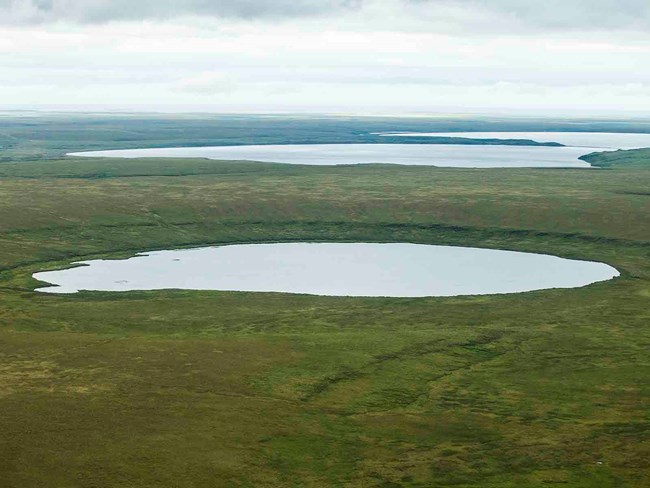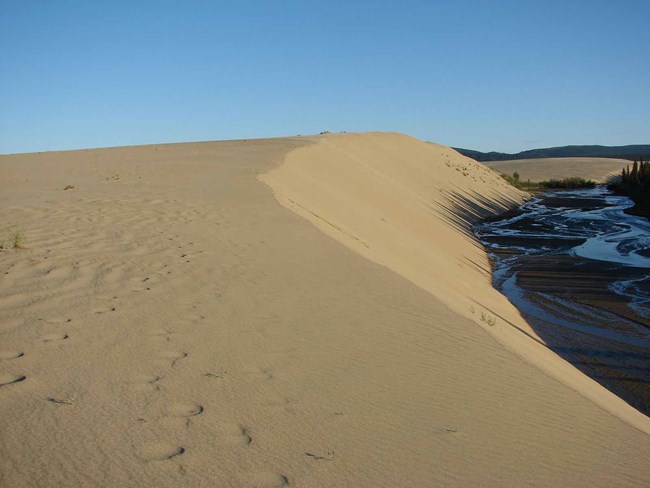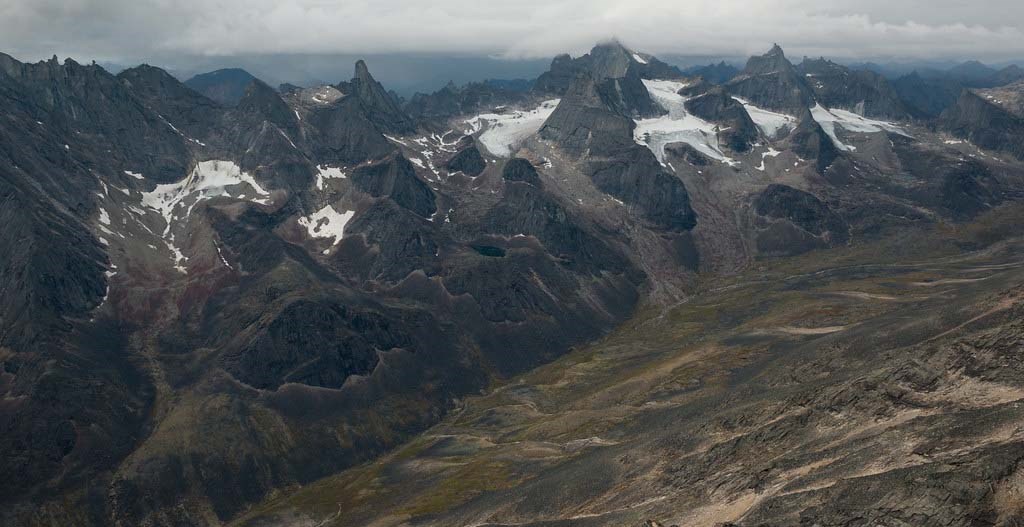
The Arctic has a geologically active past. Volcanic activity in Bering Land Bridge National Preserve can be traced to events as old as 26-28 million years ago to as recent as 1,000 years ago. Volcanic ash deposits help preserve intact, frozen remnants of Ice Age tundra from the time of the land bridge. These volcanoes have left their mark on the landscape, including the largest maar lakes in the world. This interaction of volcanic activity in a permafrost-dominated landscape is unique to the Arctic.

Kobuk Valley National Park’s sand dunes are another relic of the last Ice Age. Twenty-eight thousand years ago, the Earth cooled and glaciers began to form high in the mountains surrounding the valley. Over time, the slow, grinding advance and retreat of the glaciers ground the rocks beneath them into a fine sand which was blown by the wind into the sheltered, ice-free Kobuk Valley. When the glaciers began to retreat 14,000 years ago, they left behind 200,000 acres of rolling sand dunes along the banks of the river. These dunes, the largest active sand dunes in the Arctic, along with the smaller Little Kobuk Sand Dunes and Hunt River Sand Dunes, create 30 square miles of towering sand 35 miles above the Arctic Circle.

Although the Arctic was not covered by glaciers, there were glaciers in the Brooks Range, and some remain. Glaciers in Gates of the Arctic National Park and Preserve are unique for being entirely north of the Arctic Circle. Glaciers on the north side of the Brooks Range experience a true Arctic climate with extremely cold temperatures and very light snowfall. In total, the park had 253 glaciers on topographic maps and 32% fewer in modern satellite imagery. Terminus retreat is an important cause of this glacier area loss, but compared with other Alaska parks, the diminished glacier cover also prominently reflects the complete disappearance of many glaciers, especially in the northern portion of the park. Glaciers at low and high elevations changed the least in abundance, compared to those with a moderate elevation that diminished more so. It is likely that low-elevation glaciers in heavily shaded north-facing cirques are less sensitive to increases in air temperatures because of the lack of solar radiative heating on the surrounding terrain. For similar reasons, the highest elevation glaciers may rarely experience above freezing temperatures.
The Arrigetch glaciers retreated to their modern limits about 16,000 years ago, and although they advanced between 1,500 and 4,000 years ago, they have further receded about a quarter mile in the last century.
Check out this story from Phys.Org on the history of plate tectonics in Arctic Alaska.
Last updated: July 29, 2019
